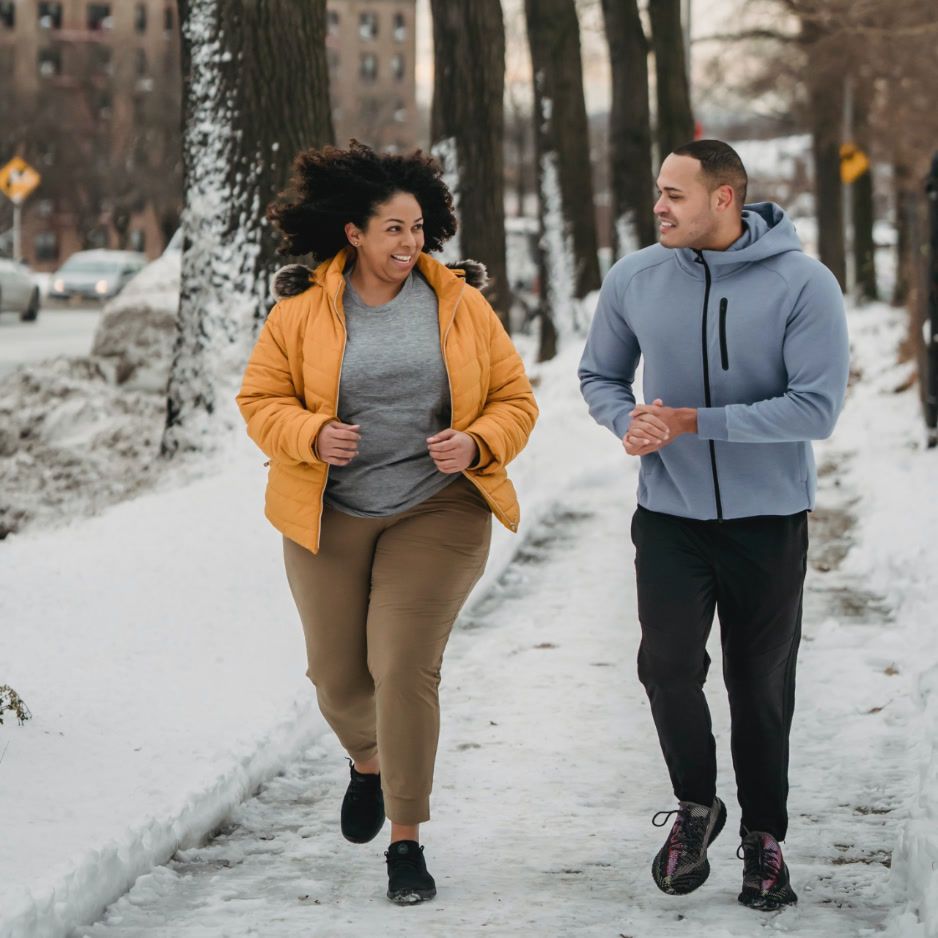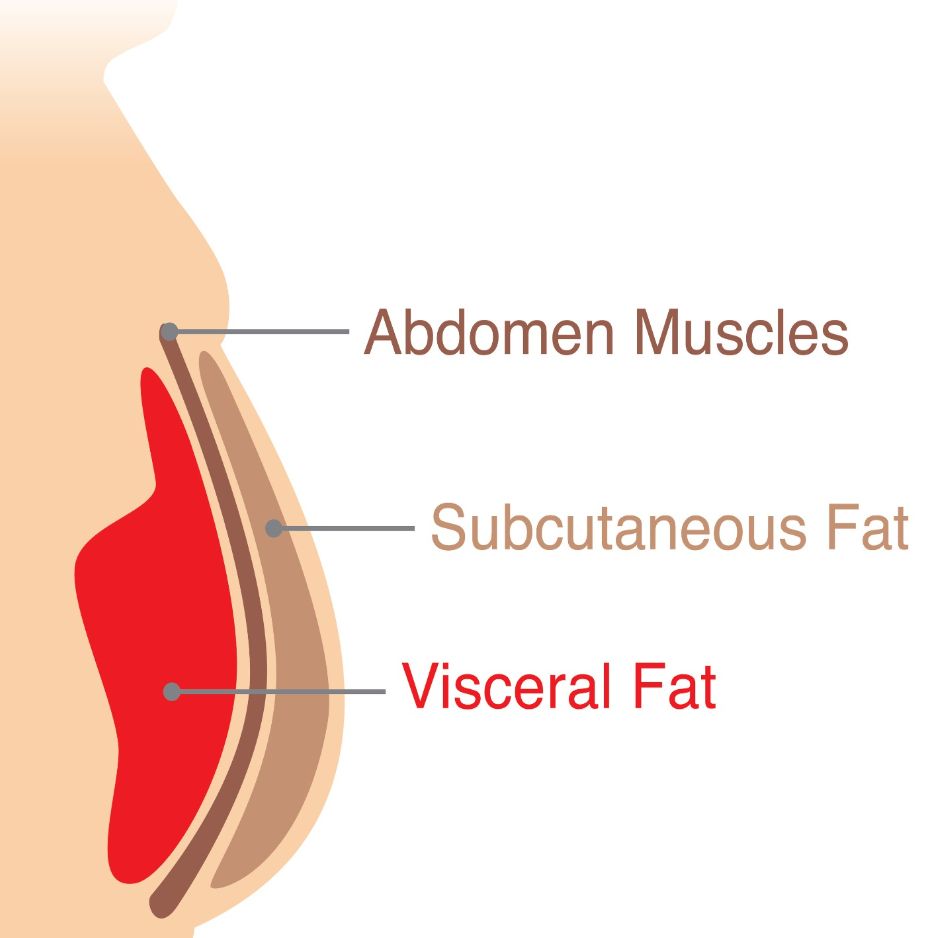Inner Thigh Workout: 15-Minute Builder for Every Level
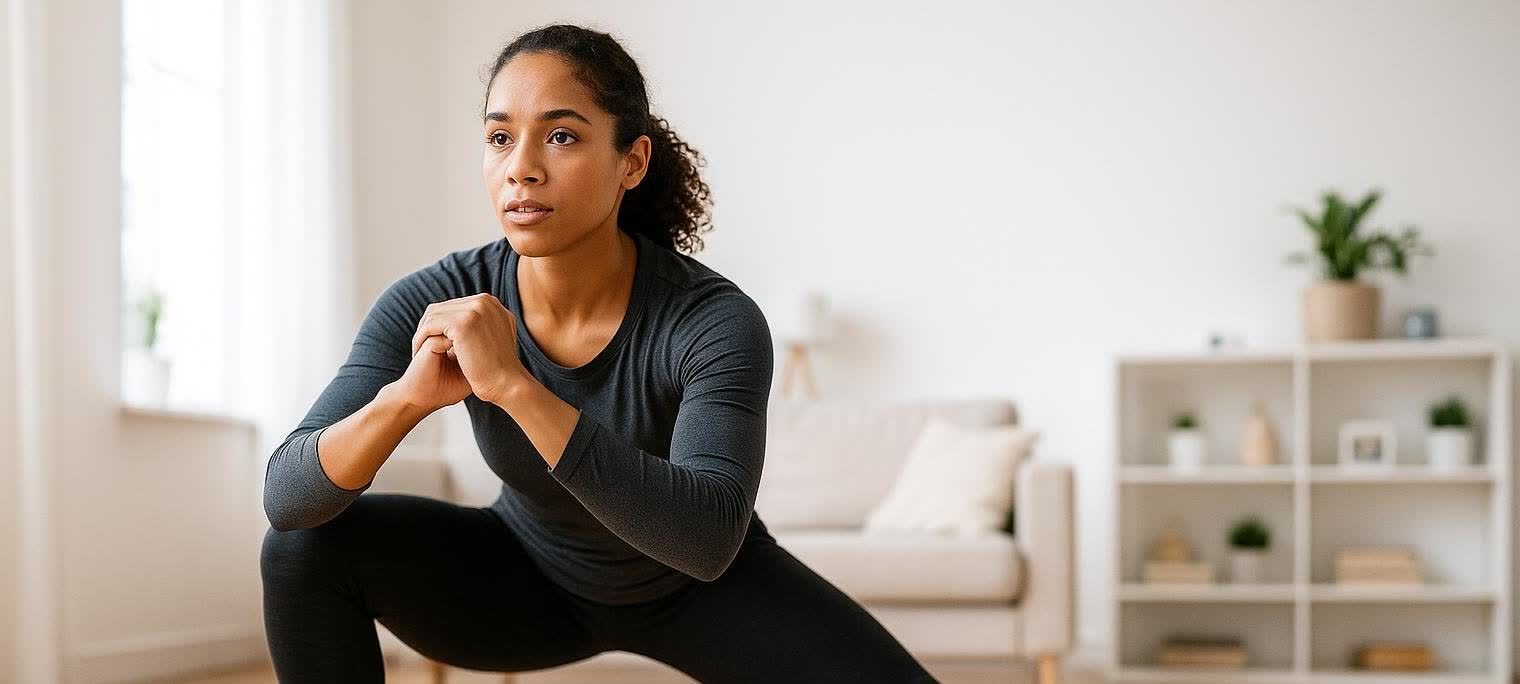
Inner Thigh Workout: 15-Min Builder for Every Level
Got 15 minutes? You can strengthen and tone your inner thighs (adductors) with targeted, knee-friendly moves—no gym required. Use this builder to create a bodyweight or banded routine that fits your schedule and goals. We’ll provide EMG-backed picks, athlete-grade progressions, and postpartum-safe options—plus how to track real change with DEXA.
Quick Start: Choose Your Path
Pick one track below. Each circuit takes about 12 minutes. Add a 3-minute dynamic warm-up and you’re done in 15.
- Beginner Basics: No equipment required
- Postpartum & Joint-Friendly: Pelvic-floor aware and gentle on knees
- Athlete Performance: Bands and advanced bodyweight progressions
All tracks include a short cool-down.
Why Train the Inner Thighs?
Your adductors do more than just contribute to toned legs—they stabilize the pelvis, control knee tracking, and power your change-of-direction. Strong adductors are linked to fewer groin issues in field and court athletes. In fact, specific programs targeting them can cut the prevalence of groin problems by about 41% in male soccer players over a season, according to a randomized controlled trial.

EMG research also shows which moves create the most adductor activation:
- A systematic review found that the Copenhagen adduction exercise significantly boosts adductor strength and muscle activity.
- An isometric ball squeeze can activate a key inner thigh muscle (the adductor longus) even more than a Copenhagen repetition, making it a great option for early-stage rehab—as noted in a 2016 BJSM conference abstract.
3-Minute Dynamic Warm-Up
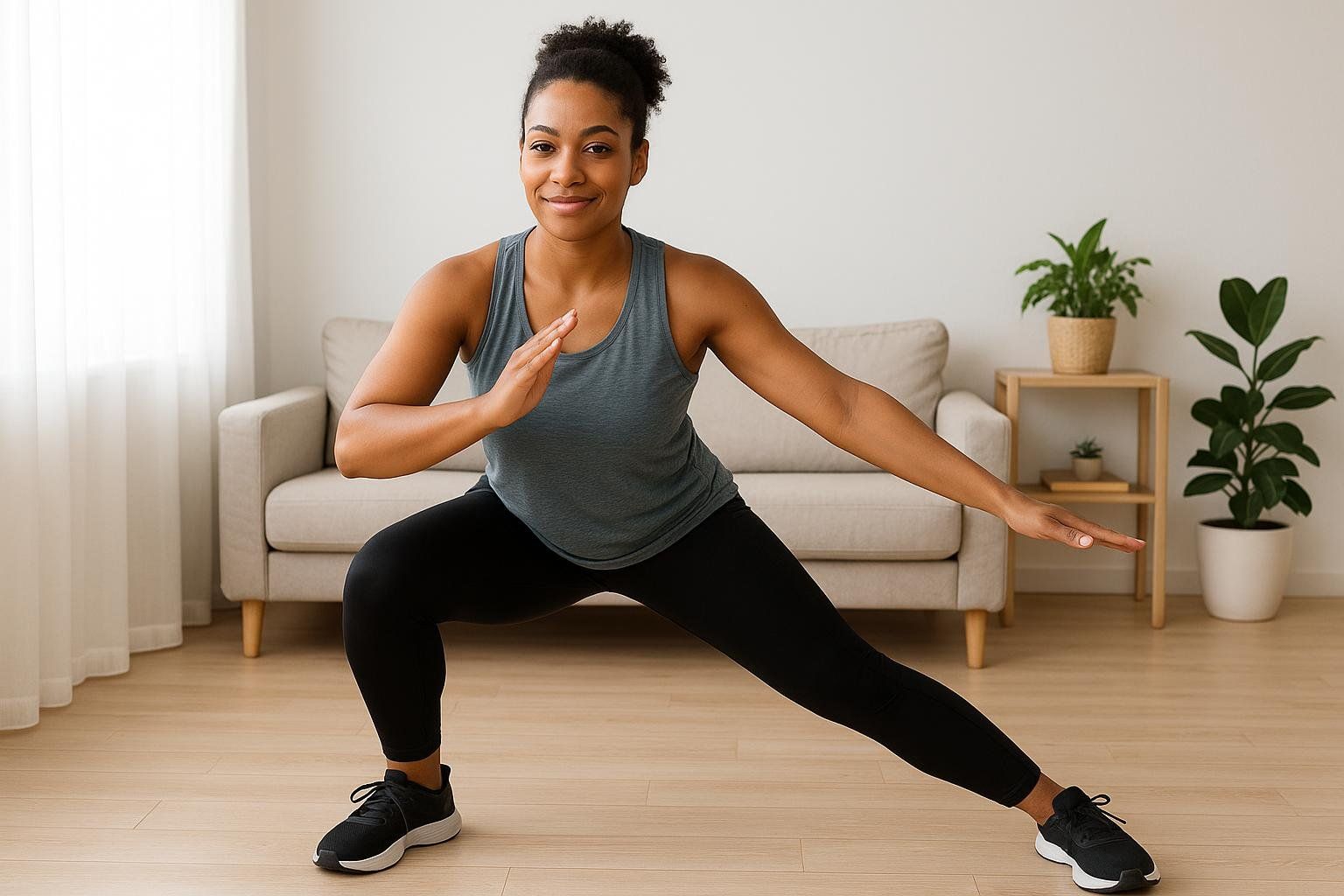
- 30s marching knee hugs
- 30s lateral step + reach (side-to-side)
- 30s hip circles each direction
- 30s bodyweight squat to stand
- 30s lateral lunges (small range)
- 30s adductor rock-backs (quadruped, knees wide)
For more warm-up ideas, see our Dynamic Warm-Up guide.
Track A — Beginner Basics: No Equipment
Do 2–3 rounds. Rest 20–30s between moves.
- Side-Lying Inner Thigh Lift (Bottom-Leg) — 12/side
- Cue: Toes up, heel leads; keep hips stacked.
- Lateral Lunge (Short Range) — 8/side
- Cue: Sit hips back; shin vertical; push the floor to return.
- Glute Bridge with Small Ball or Pillow Squeeze — 10 reps with 3-s squeeze at top
- Cue: Squeeze knees together gently to recruit adductors while lifting hips.
- Standing Adduction Sweep — 10/side (hold a wall)
- Cue: Stand tall; sweep the free leg across midline without twisting the pelvis.
- Wall-Sit Adductor Pulse — 20s
- Cue: Place a rolled towel or pillow between your knees; pulse 1-inch squeezes.
Cool-down:
- 30–45s half-kneeling adductor stretch per side
- 30–45s figure-4 glute stretch per side
Progression Roadmap (4 Weeks)
- Week 1:
- Complete 2 rounds with bodyweight only.
- Week 2:
- Increase to 3 rounds; keep reps the same and focus on smooth control.
- Week 3:
- Add a light loop band around the ankles for Lateral Lunges and slow the lowering phase to 3–4s on each rep.
- Week 4:
- Keep the band and the slower tempo; add 2 reps per exercise if form stays crisp.
- If soreness lingers >48 hours, repeat the previous week before progressing.
Track B — Postpartum & Joint-Friendly: Pelvic-Floor Aware
Do 2 rounds. Rest 30–45s between moves. Breathe 360°: inhale into ribs/back; exhale to gently zip lower abs and lift the pelvic floor.
Stop immediately if you see abdominal doming.
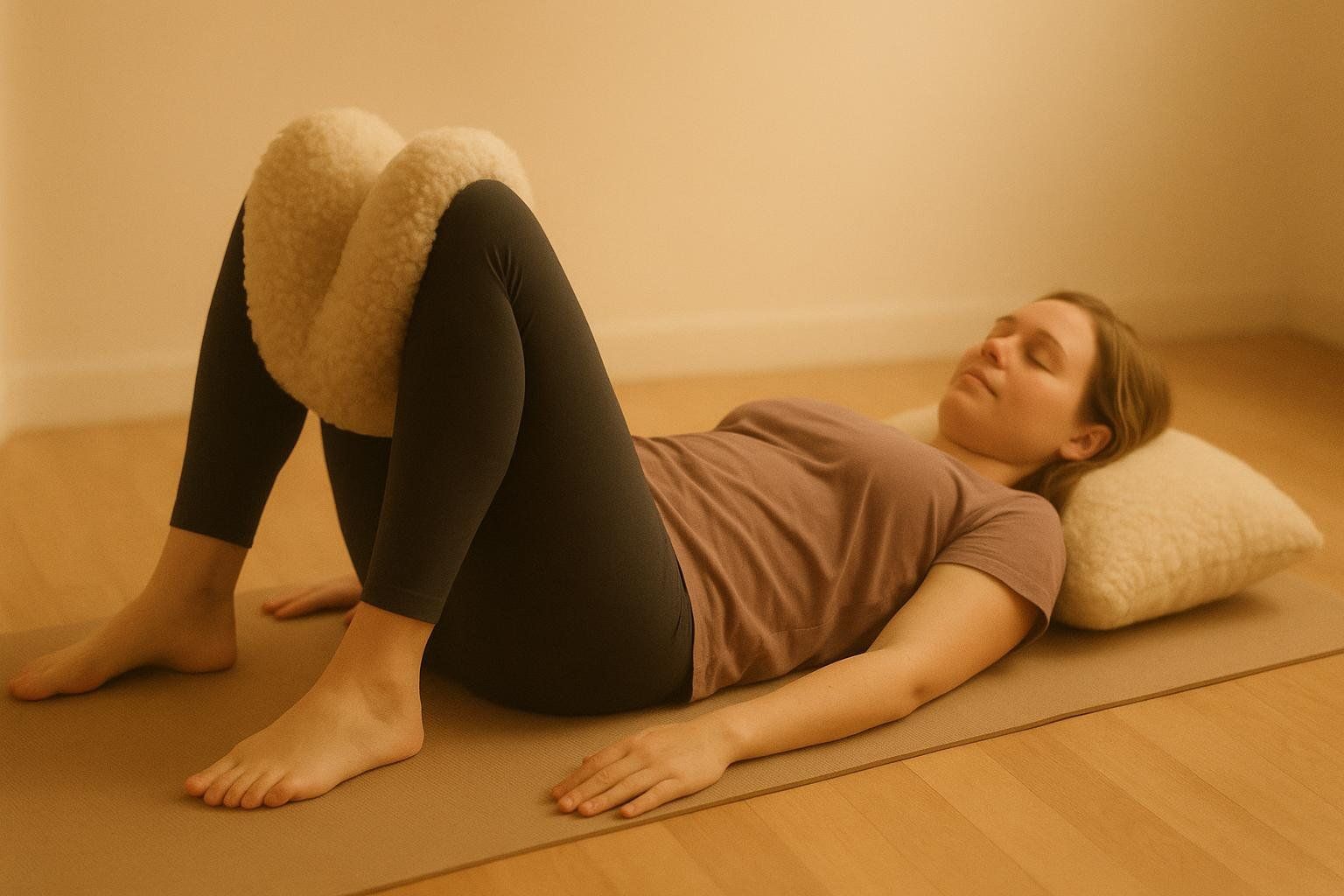
- Supine Adductor Squeeze Breaths — 6 breaths
- Cue: Lightly squeeze a soft ball or pillow between your knees; exhale to engage low abs.
- Heel Slides with Mini Squeeze — 8/side
- Cue: Keep ribs down; maintain a gentle squeeze to cue adductors and pelvic floor synergy.
- Elevated Quadruped Rock-Backs (knees wide) ��— 8 slow reps
- Cue: Exhale as you rock back; keep your spine neutral.
- Step-Up to Balance (low step) — 8/side
- Cue: Control the descent; keep your hips level.
- Side-Lying Inner Thigh Lift (Bottom-Leg) — 10/side
Cool-down:
- 60s diaphragmatic breathing
- Gentle side-lying adductor stretch, 30–45s per side
Safety: Begin only when cleared by your ob-gyn. ACOG suggests building toward 150 min/week of moderate activity; start with short bouts and progress gradually. For diastasis recti, prioritize pressure management and avoid doming; see our Diastasis Recti: Safe Recovery Guide and consider individualized physical therapy.
Track C — Athlete Performance: Bands/Advanced Bodyweight
Do 2–3 rounds. Rest 30–45s between moves.
- Copenhagen Adduction (Short-Lever) — 6–8/side
- Cue: Support your forearm on a bench; place your top knee on the bench, bottom leg free; lift and lower hips.
- Regression: Isometric holds for 10–20s.
- Slider Reverse Lunge — 8/side
- Cue: Stay tall; control the down-phase for 3s. An EMG study shows this variation increases adductor activation.
- Banded Standing Hip Adduction — 10–12/side (slow 3s eccentric)
- Cue: Control the leg across your midline; no trunk lean.
- Lateral Lunge (Full Range) — 8/side
- Cue: Load the hip; keep the non-working leg straight for an adductor stretch-load.
- Isometric Ball Squeeze (Seated) — hold for 20s
- Cue: Sit tall; squeeze a ball between your knees at ~70% effort; breathe.
Cool-down:
- Adductor long lunge stretch for 30–45s per side
- Seated butterfly stretch for 30–45s per side
Progression Roadmap (6 Weeks)
- Weeks 1–2:
- Short-lever Copenhagen 2 × 6–8; add isometric squeezes.
- Weeks 3–4:
- Add a third round; progress to long-lever Copenhagen as tolerated; increase band tension.
- Weeks 5–6:
- Add eccentric emphasis (3s lowers) or switch one day/week to isometric Copenhagen holds for 3 × 20s.
Progress only when you can complete all prescribed reps with solid form and no joint pain. If recovery is poor or form degrades, deload (reduce sets/reps) or repeat the previous week before advancing.
Form Tips for Your Inner Thigh Workout
- Knees track with toes; avoid knee cave on lunges.
- Control eccentrics (the lowering part of the movement) for 2–3s to build tendon tolerance.
- Pain vs. effort: Sharp groin pain? Stop and regress. Muscle burn is OK; joint pain is not.
- Breathe—do not brace hard on isometrics; use 4–5s exhales.
FAQ: Inner Thigh Workout Essentials
Q: Can I “spot reduce” inner thigh fat?
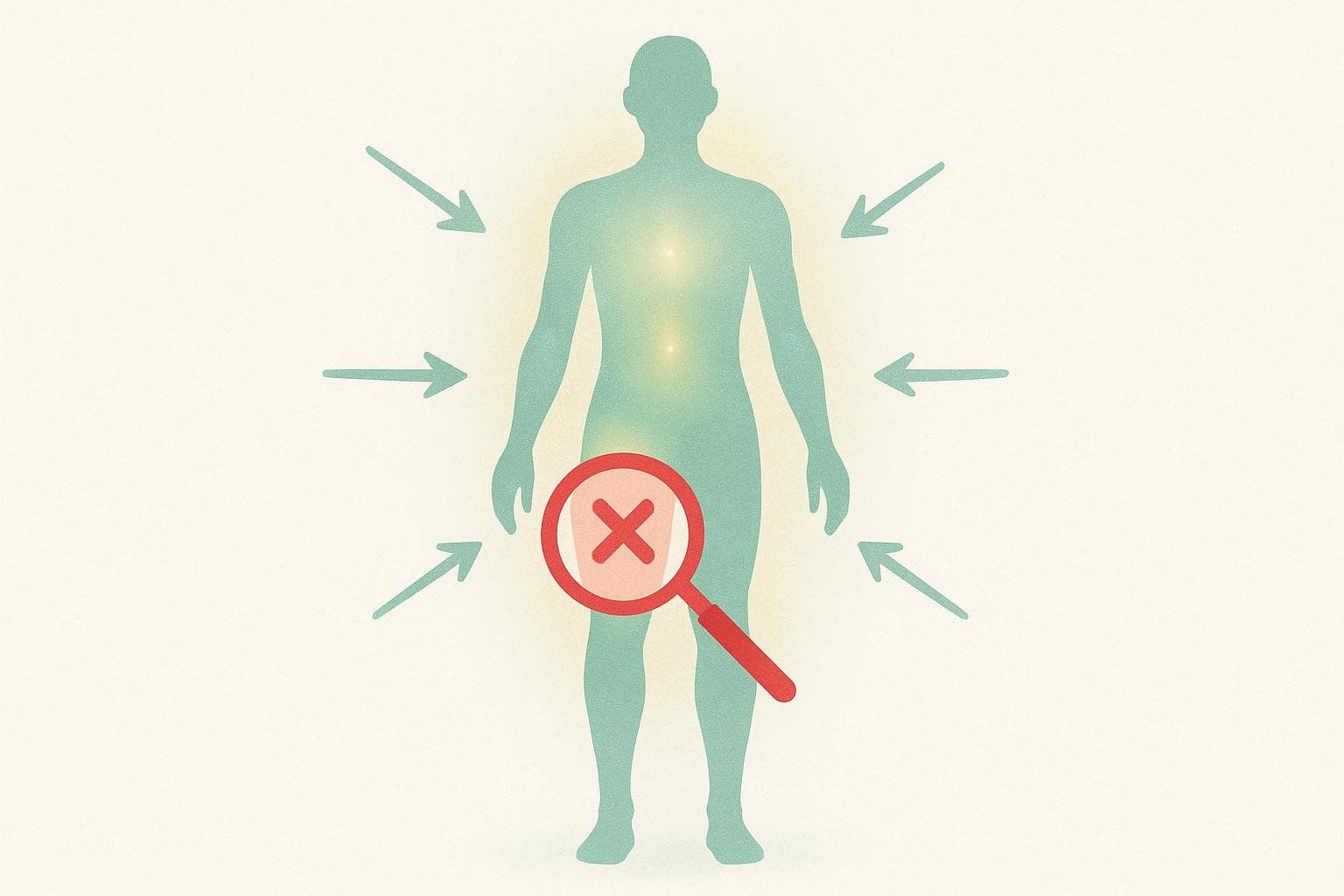
A: No—fat loss is systemic. Combine strength work like the exercises here with a slight calorie deficit and adequate protein to reveal the muscle definition underneath. For more, see our guide on how to get toned legs.
Q: How often should I train adductors?
A: 2–3 times per week, with at least one rest day between sessions. Start with 2 rounds per workout and add volume as the tissues adapt and feel stronger.
Q: Are bands better than machines?
A: Both work. Bands and bodyweight moves are convenient and train stability. Cables and machines allow for precise, heavy loading. The best choice is the equipment you’ll use consistently.
Track Progress the Smart Way
Don’t guess—measure. A BodySpec DEXA scan quantifies leg-by-leg lean mass and fat mass, so you can verify you're building stronger adductors and ensure your left and right legs are balanced. Re-scan every 8–12 weeks to assess your muscle gain and fat loss alongside your performance markers (e.g., longer Copenhagen holds, heavier band tension).
